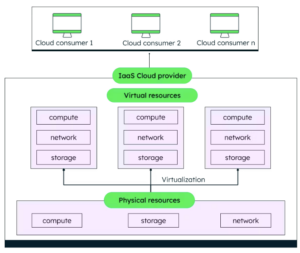
AWS re:Invent is a reliable bellwether for what’s coming next.
AWS re:Invent offers almost limitless opportunities for learning and collaboration, with training and certification sessions, workshops and labs, not to mention the Jams and GameDays. But the real draw of AWS re:Invent is finding out what’s on the horizon for AWS.
Last year’s product announcements included Amazon ECS Anywhere and Amazon EKS Anywhere, Lambda Container Support and AWS Proton , the first fully managed deployment service for container and serverless applications. So, what are the predictions for this year’s AWS re:Invent?
We’ve been talking to some of our cloud experts at DoiT to find out which announcements they won’t be surprised to hear in Las Vegas:
RDS Savings Plans May Become a Reality
AWS Savings Plans for EC2, Fargate, and Lambda were launched in 2019. All may be extended to Relational Database Service (RDS) instances this year.
Savings Plans are committed spend discount plans that apply cost savings for bulk purchasing. Discount percentages and payment options are the same as for Reserved Instances (RIs). However, RIs offer discounts based on committed utilization, whereas Savings Plans discounts depend on committed dollar-per-hour spend.
As things stand, AWS Savings Plans cannot be applied to RDS instances, AWS Redshift or ElastiCache services. We see that changing following this year’s re:Invent. Even so, AWS Savings Plans are no panacea for complexity. Savings Plans don’t automatically optimize costs so that you minimize your unused discounts.
It’s important to implement a reliable cloud cost management strategy that enables visibility and optimizes your usage across all your computing platforms. A platform that maximizes your compute savings by continuously analyzing your compute-based workloads and applying discounts automatically makes this easier.
EKS Anywhere will Extend support to non-VMware VMs
Following the launch of AWS EKS Anywhere last year, users can now create and operate on-premises Kubernetes clusters with tooling consistent with Elastic Kubernetes Service (EKS) in the cloud. Google and Microsoft already offer on-premises deployment options for Kubernetes services.
Amazon EKS Anywhere enables the creation and operation of Kubernetes clusters on virtual machines (VMs) and bare metal servers, eliminating the need to build and support the tooling required to manage Kubernetes in production. With EKS Anywhere, the management console and the control plane for EKS remain in the AWS Console, but the nodes run on on-premises bare metal. However, AWS support is currently limited to production clusters that use VMware vSphere.
AWS has confirmed that it will add bare metal support in 2022. We predict that it will announce the extension of this support to non-VMware VMs in Las Vegas.
Watch out for GitOps news
GitOps is an operational model for application delivery that enables management of multiple Kubernetes clusters by applying best practices in the areas of version control, immutable artifacts and automation. Once commits are pushed and approved in Git, automated CI/CD pipelines roll out changes to infrastructure. Development becomes more efficient because teams can make changes and updates quickly, knowing that they will be alerted immediately to any divergence between actual production state and what’s under source control.
What has all this got to do with AWS re:Invent? With the industry pushing for teams to start using GitOps as the standard approach to deliver cloud-native applications, we think AWS may announce a CodeGitOps service at this year’s re:Invent. This CodeGitOps service would be part of AWS Codestar, the cloud-based development service that enables speedy setup of the continuous delivery toolchain for faster code releases. If such a service is announced, it would probably manifest as a managed ArgoCD or FluxCd wrapped in the AWS UI.
Flux and Argo CD are declarative, GitOps-based continuous delivery tools for Kubernetes that are becoming increasingly popular. Both tools use Git repositories as the source of truth for defining the preferred state of a cluster. They restrict themselves to the continuous deployment (CD) element of a CI/CD pipeline, allowing users to choose their own continuous integration (CI) workflow provider. Users can also decide on their Git provider of choice (GitHub, GitLab, BitBucket, AWS CodeCommit).
Don’t be surprised by more ARM instances
Cloud computing is shifting from x86 to ARM (Advanced RISC Machines) as its dominant architecture, and AWS is at the forefront of this transition. AWS pioneered ARM for cloud providers, offering ARM instances with Graviton in 2018 and Graviton2 in 2020.
The first-generation AWS Graviton processors power Amazon EC2 A1 instances, generating substantial cost savings over other general-purpose instances. Improvements in performance and capabilities soared with the introduction of the next-generation Graviton2 processor, with five full instance families (M6g, C6g, R6g, T6g, X2gd) and nine variations that enable optimization on factors such as cost, performance and memory.
Graviton2 processors have since been made available for services including RDS, Lambda and EKS. As AWS delves deeper into ARM instance territory, we expect new instance types to be using it in the near future — possibly next year. With more managed services embracing ARM instances for lower costs, customer reliability engineers (CREs) will need to familiarize themselves on migrating workloads to ARM.
Bank on more real-time solutions for remote working
Working remotely is something we have always been comfortable with at DoiT, but for other businesses the shift to remote has been sudden and not always successful. As the remote workplace becomes a permanent reality worldwide, we expect AWS to launch more real-time WebRTC/video streaming and conferencing solutions.
WebRTC is an open technology specification that makes real-time communication (RTC) possible across browsers and mobile applications using simple APIs. Peering techniques enable real-time data exchange between connected peers, and low latency media streaming facilitates interaction between individuals.
Last year, AWS launched AWS Transit Gateway Connect, a new feature of the AWS Transit Gateway, which connects VPCs and on-premises networks via a central hub. AWS Transit Gateway Connect streamlined branch connectivity by natively integrating Software-Defined Wide Area Network (SD-WAN) appliances into AWS. SD-WANs allow businesses to securely connect users to applications, making remote working a safer option for enterprises.
Setup, security, and maintenance of self-managed client-based VPN solutions can be difficult operationally — particularly if large numbers of employees suddenly need to connect from remote locations. AWS Client VPN is a managed service that facilitates secure access to AWS and on-premises networks from anywhere, using OpenVPN-based clients. New products and/or enhancements that facilitate remote working could be on the way.
Anything else?
The list of what could be announced at re:Invent goes on. Here are some other revelations that wouldn’t shock our cloud experts:
- More tools that integrate with Visual Studio Code
- More events for Lambda
- Improvements to the Desktop-as-a-Service system
- A new version of AWS DevOps Guru, the machine learning-driven service announced in 2020
- Lower egress traffic pricing
- Improvements to Amazon Managed Blockchain
Prophecies fulfilled
How accurate are our predictions? All will be revealed between November 29 and December 3 in Las Vegas! If you are attending re:Invent this year, be sure to drop by our booth — #354 — to learn how you can boost performance and maximize savings with the cloud.
And for the social highlight of the event, join us on November 30 for an exclusive party at the OMNIA Nightclub. See you there!
To stay connected, follow us on the DoiT Engineering Blog, DoiT Linkedin Channel and DoiT Twitter Channel. To explore career opportunities, visit https://careers.doit.com.

